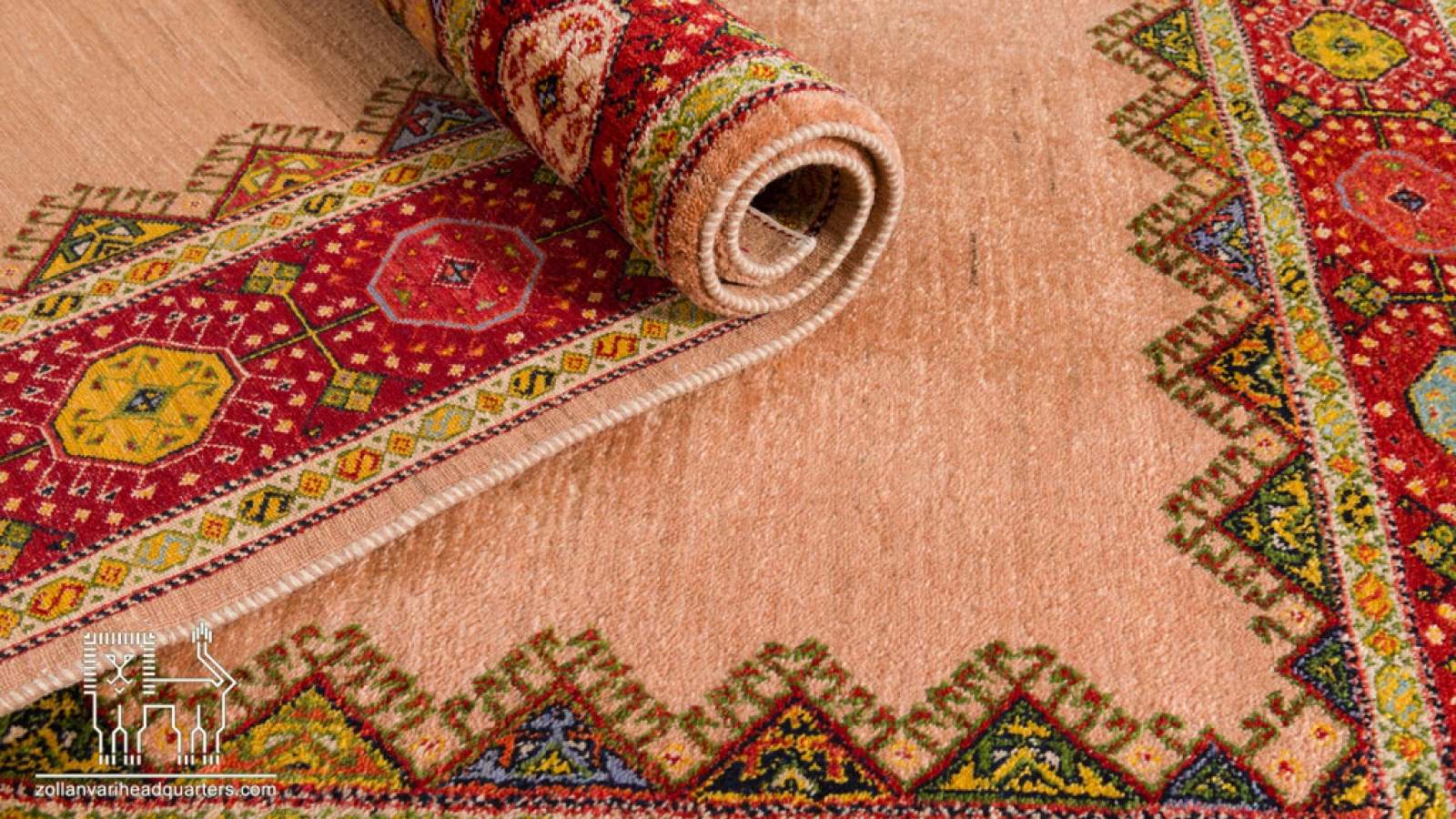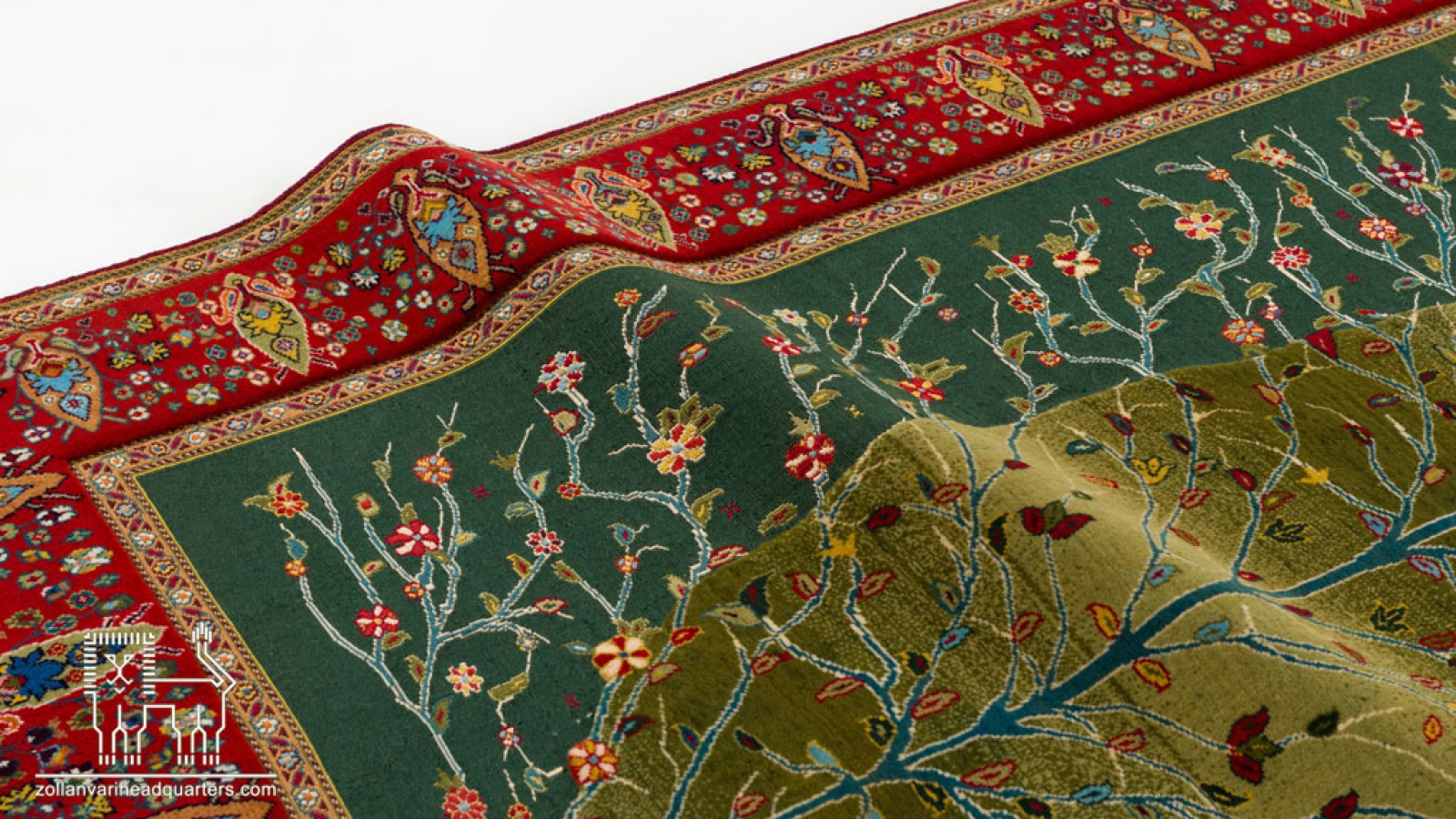Exploring the Heritage and Industry of Zollanvari Carpets
The art of Iranian weaving | Weaving art in Iran, especially in the Fars province, is recognized as a rich and valuable cultural heritage. This art has been passed down through generations by nomadic tribes and weavers, and today it is considered one of the symbols of Iranian culture and identity. Zollanvari carpets, as a symbol of Iranian weaving art, have enriched this heritage not only with their quality and beauty but also with the stories and symbols embedded in their designs. In this content, we explore various aspects of Iranian weaving art, particularly Zollanvari carpets, and highlight the role of nomadic tribes, their color palettes, designs, and their impact on Iran’s cultural identity.
The Greatness of Weaving Tribes and Nomads
In Iran, especially in the Fars province, weaving tribes such as the Qashqai and Bakhtiari are among the most important segments of the nomadic community. These tribes use local materials and traditional techniques to create carpets with diverse patterns and colors, each of which tells a story of their life and culture. Gabbeh carpets, as one of the types of handwoven pile carpets, hold a special place in this industry due to their unique and distinctive weaving style.
History of Weaving Art
The history of weaving in Iran dates back over 2500 years BC. This art initially began as a nomadic activity and then spread to villages and cities. Weavers, using natural fibers such as wool and silk, have created unparalleled works of art that have always been recognized throughout history as symbols of Iranian craftsmanship and creativity. Zollanvari carpets, with their rich history and cultural identity, stand as representatives of this ancient art.
Gabbeh: A Look at One of the Types of Handwoven Carpets
Gabbeh is a type of handwoven pile carpet, primarily woven among the Bakhtiari and Qashqai nomads. This type of carpet is notable for its simple yet distinctive weaving technique, and it has become one of the symbols of Iranian weaving art. Gabbeh carpets generally feature a variety of patterns and colors, each symbolizing an aspect of nomadic life and culture.
Color Palettes: Connection with Nature
Color palettes in Zollanvari carpets hold significant importance. The weavers of these carpets use natural dyes in an effort to stay true to nature. These colors not only have greater stability and durability but also lend a unique brilliance and beauty to the carpets. Although the use of chemical dyes has become common today, experts continue to work on reviving traditional, natural dyeing techniques.
Patterns: Stories of Life
The patterns used in Zollanvari carpets are another important aspect of this art. These patterns each tell stories and experiences of the nomads’ lives. Lush meadows, fire, goats, horses, and other natural elements are beautifully depicted in these patterns. These elements not only provide visual beauty but also serve to showcase the identity and social life of the weaving tribes.
 Iranian Weaving Art
Iranian Weaving Art
Social and Economic Impacts
Weaving art is impactful not only in the cultural sphere but also in the economic one. Weavers help sustain their livelihoods and those of their families by producing high-quality carpets. Given the global carpet market, this industry can also be considered a significant source of income for the country. The Zollanvari Carpet Cooperative, which employs thousands of skilled weavers, is recognized as one of the largest producers of handwoven carpets in the world.
Conclusion
Iranian weaving art, especially Zollanvari carpets, is not only an industry but also a rich and valuable cultural heritage that portrays Iran’s identity and history. The weavers of these carpets, from nomadic and pastoral tribes, have created unparalleled works of art using their skills and deep connection to nature. This content has explored various aspects of this art, from its history and weaving techniques to its color palettes and patterns. Preserving and promoting this art is not only a cultural duty but also an economic and social necessity. It is hoped that Iranian weaving art, especially Zollanvari carpets, will always remain alive in the hearts and minds of the people of Iran and the world.



